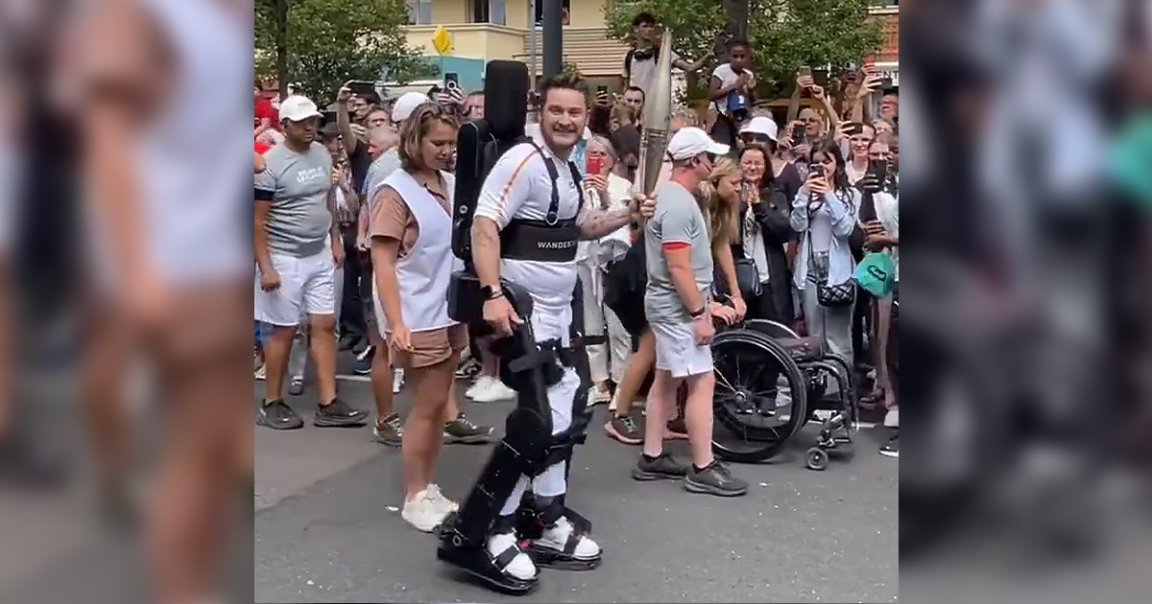
Suited Up
As the Olympics began to kick off, a paralyzed tennis player carried the Olympic flame through Paris — using a robotic exoskeleton that helped him walk again.
In a now-viral post on X-formerly-Twitter, para-athlete Kevin Piette was seen walking with the Olympic Torch while wearing a black exoskeleton device that moved his legs as he walked through throngs of spectators and well-wishers at the start of this year’s summer games.
As the Olympics’ website explains, Piette has been paraplegic — meaning his legs are paralyzed — for 11 years following an accident. In the wake of that accident, the 36-year-old continued to play tennis and became a “pilot” for Wandercraft, the company that makes the exoskeleton he was seen wearing, too.
In photos and videos on the France-based company’s Instagram and on its website, Piette is often seen wearing its exoskeleton, which per Wandercraft’s marketing “enables patients with severe gait impairment, including those with upper extremity dysfunction or cognition challenges to stand up and walk hands-free.”
As the Daily Mail reports, Piette is the first real para-athlete to wear a self-balancing exoskeleton during the Olympic relay — though unfortunately, Wandercraft told the outlet that he didn’t qualify for this year’s Paralympics.
Next Level
These self-balancing exoskeletons, as Euro News reported in 2022, are battery-operated and offer personalized support to the legs and torsos of people who have lost the ability to walk due to health conditions ranging from strokes to paralysis. The devices also have sensors that can detect when wearers want to stand by reading upper body movement using bespoke algorithms, the report noted.
As Freethink reported in early 2023, Wandercraft’s exoskeletons have only been cleared by the Food and Drug Administration in the United States since the end of 2022, and for stroke rehabilitation in particular. In France, however, roughly 20 of the robotic exoskeletons had been deployed to hospitals to help patients walk again, at around $176,000 a pop.
But with the establishment of a campus in New York City to continue making the devices all the more autonomous, it may not be long before Wandercraft’s robotic exoskeletons, or others like them, are seen in the streets of the United States, too.
More on the Olympics: It Looks Like Grindr Has Blocked the Paris Olympic Village From Search